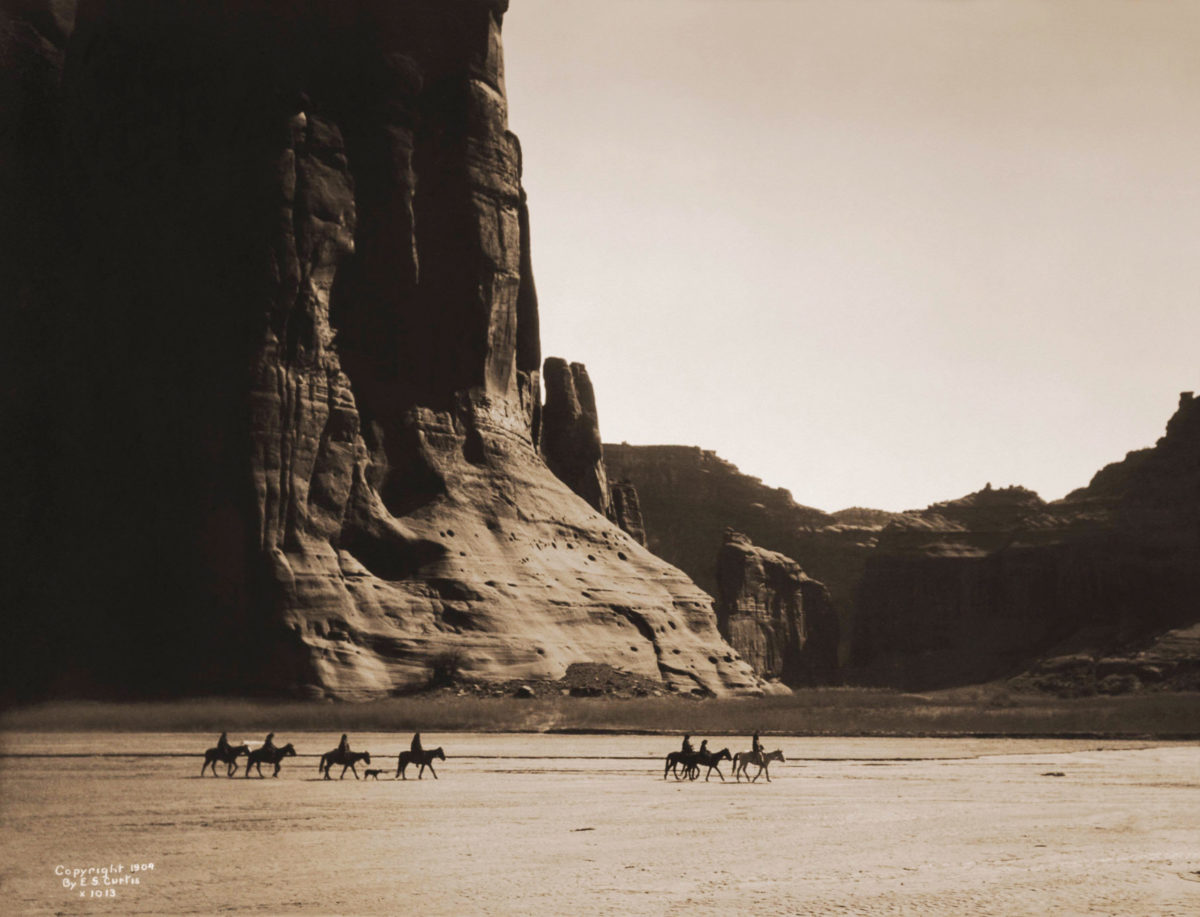What early photographer had the best eye for showcasing Western Indians? The 20th-century photographer and ethnologist Edward Sheriff Curtis (Feb. 19, 1868–Oct. 19, 1952) is arguably the one.
Certainly, he was as prolific as anyone. Curtis traveled the West in his quest to photograph native people of the Plains, Pacific Northwest, the Southwest and other regions. He would go on to visit more than 80 tribes and produce 40,000 photographic images. From 1907 to 1930 he created his 20-volume “The North American Indian,” which consists of more than 700 large portfolio images, at least 1,500 smaller images and 4,956 numbered pages.
The Navajo people of the American Southwest have been abundantly photographed through the years, and this iconic image shot in 1904 by Curtis is among the best known in no small part because it also shows a captivating landscape. The gold-toned platinum print captures the graceful silhouettes of Navajo riders as they slowly cross the desert at the base of Canyon de Chelly in northeastern Arizona.
“There have been thousands and perhaps tens of thousands of photographers who photographed the American Indian, yet rarely do we see other photographs of native people that combine such aesthetic sophistication, vulnerability and beauty of object,” Christopher Cardozo (author of “Edward S. Curtis: One Hundred Masterworks”) said in a December interview with Wild West.
historynet magazines
Our 9 best-selling history titles feature in-depth storytelling and iconic imagery to engage and inform on the people, the wars, and the events that shaped America and the world.


